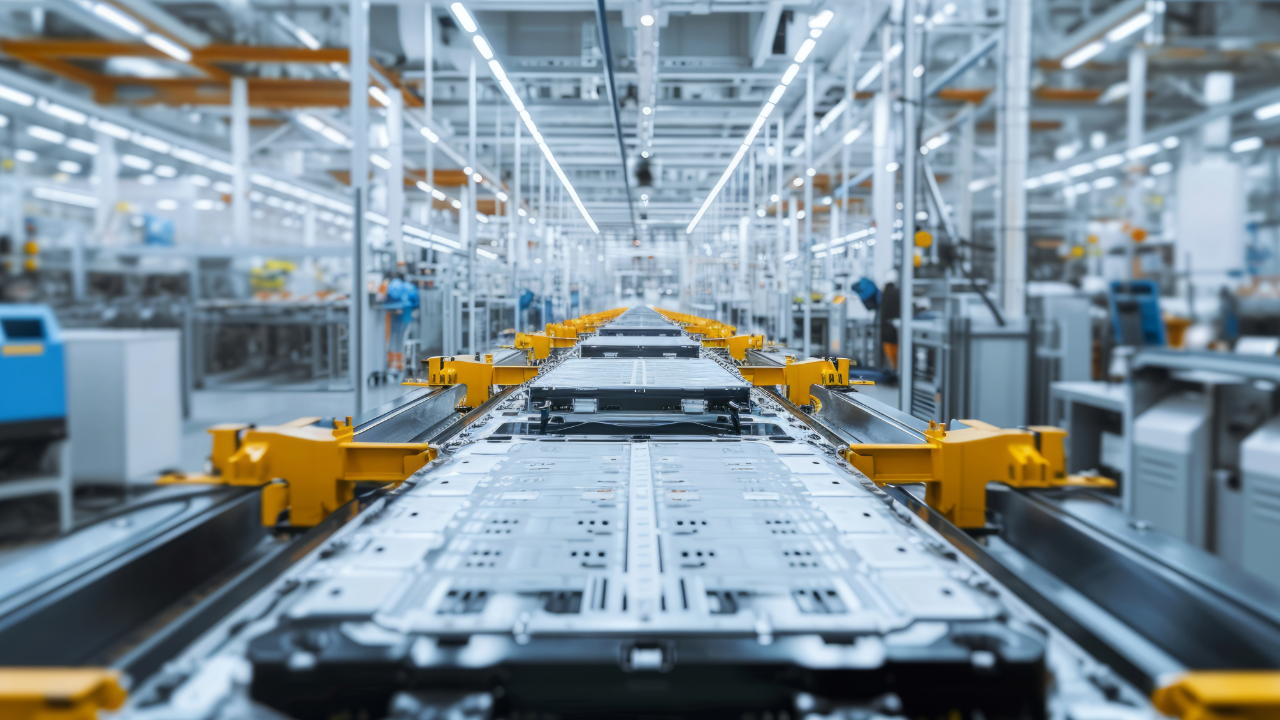
US Manufacturing Growth Slows as Companies Struggle to Pass Rising Costs to Price-Sensitive Customers
US Manufacturing Growth Slows as Rising Costs Squeeze Margins
Tariffs and stubborn input prices weigh on factories despite steady expansion
September 23, 2025 — America’s factories are still expanding, but the gears aren’t turning as smoothly as before. The S&P Global US Manufacturing Purchasing Managers’ Index slipped to 52 in September, down from August’s three-year high of 53. That’s still above the growth threshold, but it shows momentum is fading.
The S&P Global US Manufacturing PMI has dipped from a recent high, indicating a slowdown in growth momentum even while remaining in expansion territory.
| Month/Year | PMI Value |
|---|---|
| September 2025 | 52.0 |
| August 2025 | 53.0 |
| July 2025 | 49.8 |
The Purchasing Managers' Index (PMI) is a key economic indicator reflecting the health of the manufacturing or services sector. A PMI reading above 50 generally indicates expansion in the economy, while a reading below 50 suggests contraction.
Behind that figure sits a more complicated reality: manufacturers are being pulled in opposite directions. Costs for materials remain painfully high, while customers are pushing back harder against price hikes. The result? A margin squeeze that leaves many companies running harder just to stay in place.

Expansion That Doesn’t Feel Like Growth
September marked the fourth straight month of growth, yet the mood inside factories feels more cautious. Output rose, but nowhere near the pace of August’s surge. New orders kept climbing for a ninth month, though only by a sliver.
“The headline number hides the real story,” said one senior manufacturing analyst. “Firms are caught in a storm of higher costs and weaker demand that’s reshaping the competitive landscape.”
Tariffs have turned into a sharp thorn. Export orders that should be lifting sales are instead shrinking, as overseas buyers look to suppliers in countries outside the tariff net.
The Price Squeeze Tightens
Nothing captures the sector’s challenge more than prices. Raw materials, energy, and specialized components still command steep premiums, even though inflation has cooled in much of the wider economy.
A table illustrating the divergence between rising input costs and flatter output prices for U.S. manufacturers, highlighting the margin squeeze.
| Period | Input Price Trend (Manufacturing) | Output Price Trend (Manufacturing) | Margin Implication |
|---|---|---|---|
| September 2025 | Manufacturing input price inflation remained elevated at one of the highest rates since the pandemic, albeit dipping slightly since August. Overall input cost inflation accelerated to its highest since May. | Average prices charged for goods and services rose at the slowest rate since April. Firms reported difficulties passing higher costs on to customers due to weak demand and growing competition. | Limited ability for manufacturers to pass on increased input costs to customers, contributing to a margin squeeze. |
| August 2025 | The gauge for input price inflation eased to 63.7 from 64.8 in July but remained elevated overall. | Output charges climbed, but the subsequent slowdown in September suggests a limited ability to sustain significant price increases. | Input costs remained high, while output price increases were likely constrained. |
| Recent Trend | Input costs have been sharply higher, with tariffs widely cited as a main cause. | Selling prices have risen at a slower rate due to weaker demand and stiff competition. | The divergence between elevated input costs and constrained output prices continues to highlight a margin squeeze for manufacturers. |
But passing those costs on to customers has become nearly impossible. Buyers are cautious, budgets are tight, and competitors are ready to undercut. The outcome is thinner margins across the board. In earlier cycles, companies might have simply raised prices. Today, they’re eating the difference.
Inventories tell the same story. Firms are stocking up more slowly, wary of tying up cash in an uncertain environment. At the same time, supply chain delays crept back in, with lead times stretching to a four-month high.
Hiring Shows Early Cracks
Jobs in manufacturing still grew in September, but the pace slowed. It’s a small shift, though it could prove meaningful if it continues.
Monthly change in U.S. manufacturing employment, showing a recent slowdown in job creation.
| Month (2025) | Monthly Change in Manufacturing Employment (in thousands) |
|---|---|
| August | -12 |
| July | -5 |
| June | -13 |
Several forces are at play. Wages keep rising, adding to cost pressures. At the same time, automation and efficiency gains mean factories can produce more without adding staff. And with demand less predictable, many companies prefer overtime and temporary contracts over permanent hires.
“It’s late-cycle behavior,” explained one industry consultant. “Firms want flexibility, not long-term commitments.”
Cautious Optimism Despite Obstacles
Here’s the paradox: while conditions are tough, business confidence ticked up to a three-month high in September. Still, it remains below long-run averages.
Why the optimism? Some leaders expect tariff changes that could revive exports. Others see stable-enough domestic demand to keep business ticking over. And companies that embraced automation or diversified supply chains feel more resilient than in past downturns.
Even so, the optimism looks defensive. It’s less about betting big on growth and more about weathering the storm until conditions improve.
Automation Races Ahead
The crunch has sped up a shift that was already in motion: more machines, smarter systems, and sharper processes. Investments in automation, process controls, and productivity software are booming, as firms hunt for ways to offset higher costs and shrinking margins.

This trend is creating clear winners—tech providers and equipment makers—while labor-intensive operators risk falling behind.
Policy Crosscurrents
The PMI numbers complicate things for the Federal Reserve. On one hand, growth is slowing. On the other, sticky input costs mean inflationary pressure hasn’t fully eased. That mix could make policymakers hesitate before cutting rates too aggressively.
A strong dollar adds another headache. It makes US exports pricier just as overseas demand weakens, deepening the squeeze on manufacturers already burdened by tariffs.
A strong dollar makes American goods more expensive for international buyers, significantly hurting U.S. exporters and negatively impacting domestic manufacturing. This diminished competitiveness in global markets can lead to reduced sales and profitability for businesses relying on foreign trade.
What It Means for Investors
For investors, today’s manufacturing landscape is tricky. History shows that when margins shrink, the winners are companies with pricing power, strong operations, and disciplined cost control.
Sectors like aerospace and defense may hold up better, supported by government contracts and long backlogs. Automation companies could thrive as adoption accelerates. Meanwhile, exporters hit by tariffs and commodity producers without pricing leverage face an uphill climb.

Analysts suggest focusing less on broad industrial exposure and more on firms with resilient balance sheets, healthy free cash flow, and the ability to defend margins.
Looking Ahead
The latest data signals that US manufacturing has entered a more mature phase of its cycle. Growth hasn’t vanished, but it’s slower, more cautious, and driven by efficiency gains rather than sheer volume.
Companies that invested early in automation, diversified suppliers, and deepened customer ties are positioned to handle the pressure. Those leaning on cheap inputs or tariff-sensitive exports may find the road ahead bumpier.
Politics could play a role too. Manufacturing performance in key states is bound to shape debates around tariffs, trade, and industrial support. Even small job losses could spark louder calls for policy changes.
For now, one thing is clear: the expansion continues, but the margin for error has shrunk. In today’s manufacturing economy, quality execution and smart positioning matter more than ever.
NOT INVESTMENT ADVICE